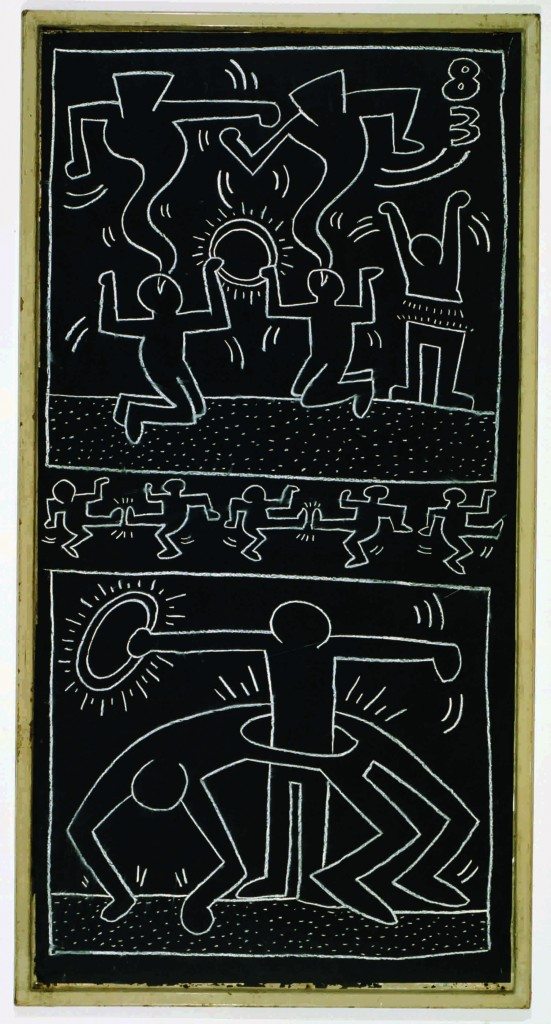Keith Haring
12.10.2015
Keith Haring, "Untitled (Subway Drawing)", chalk on paper, 220 x 114 cm, 1983, © Keith Haring Foundation. Collection Udo and Anette Brandhorst.
Keith Haring, from metro to museum
With his friends Andy Warhol and Jean-Michel Basquiat, he is without a doubt one of the most symbolic figures of the New York artistic underground scene in the 80s. Passed away from AIDS at the age of 31, Keith Haring (1958-1990) produced an abundant body of work in just a few years, a personal diary of a boy with a driving energy who looked at his time with a staggering clear-headedness. Arriving in New York in 1978 he discovered graffiti, the tags and the freedom of an urban language which fascinated him. For him “art lives from the imagination of the people looking at it”. From his first attempts with white chalk over metro station walls until the work that he eventually offered to Tony Shafrazi’s or Leo Casttelli’s prestigious galleries, including his participation in collective exhibitions in cult Club 54, a gay nightclub where he spent his nights, Keith Haring pursued only one main goal and that was to produce an art accessible to all. With an immediately recognizable style inspired by comics and television, based on graphic vocabulary composed of basic forms, signs and pictograms – the Radiant Baby figure, a metaphor of youth and life done with solid colors and characters sketched with clear black lines. What hides behind the apparent simplicity of his drawings and his “pop” paintings is a deeply committed art. The man and the artist were one while committed body and soul against racism, the evil of drugs and AIDS.
By Guillaume Morel, journalist for magazine “Connaissance des Arts” and author of several books including “Art Déco” and “Paquebots”, published by Editions Place des Victoires.
To be visited: Keith Haring – The Political Line, Kunsthal in Museumpark, 341 Westzeedijk, 3015 AA Rotterdam, +31 10 440 0301, www.kunsthal.nl, until 7 February 2016.

